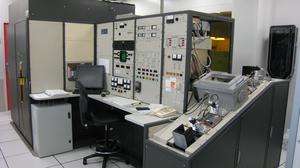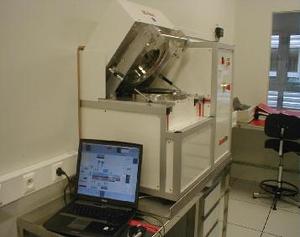Ionic Implantation
Contacts :
- Dmitri YAREKHA
- Laurent FUGERE
Implantater EATON-AXCELIS GA 3204
Characteristics
- Energy : 12 keV to 200 keV
- Fluences : from 1.1011 at/cm2
- Size of samples : 1 cm2 and habitual sizes : 2”,3” and 4”
- Species : see picture below
- Gas boxes : an internal : corrosive, toxic, inflammable and an external of neutral gases.
- Tilt : de 0 à 15°
- Twist : de 0 à 360°
- T emperature of holder : – 10°C to 30°C
The implanter GA 3204 is “a middle current” dedicated to the localised processes of doping and isolation.
However, we also carry out “processes of assistance to technology”:
- Thus, with to the judicious use of various co-implants, it is possible to minimise the diffusion of the implanted doping.
- It was shown feasibility by the use of strong fluences and an adequate annealing, possibility of making the localised synthesis (ion beam synthesis)of a material like GaN starting from GaAs.
- By implantation of heavy ions in stable chemical material, particularly case of the superconductors, or GaN… it was observed that etching of those, are some facilitated.
Other examples are available, which makes us say that the implantation is used in our laboratory like a “tool of assistance to technology”.
Characteristics of Furnaces RTA
JIPELEC: JETSTAR 100S
- Range of temperatures: of 100° with 1050°C
- Suscepteurs : silicon or graphite-SiC
- Gas process: N2; 15%H2 in N2 Primary vacuum: 2.10-2 mbar
- Samples: up to 4 inches
ANNEALSYS: AS-ONE100
- Range of temperatures: of 140° with 1200°C
- Secondary vacuum: 2. 10-7 mbar
- Gas process: N2 or 15%H2 in N2 Samples: up to 6 inches
- Suscepteurs: silicon or graphite-SiC
These furnaces allow us is to proceed to the electric reactivation of the majority of the implanted chemical species, with recovery partial or total of the defect, create during the implantation; that is to say to carry out heat treatments in order to carry out a growth of precipitates for to making of particular structural materials (synthesis).

















